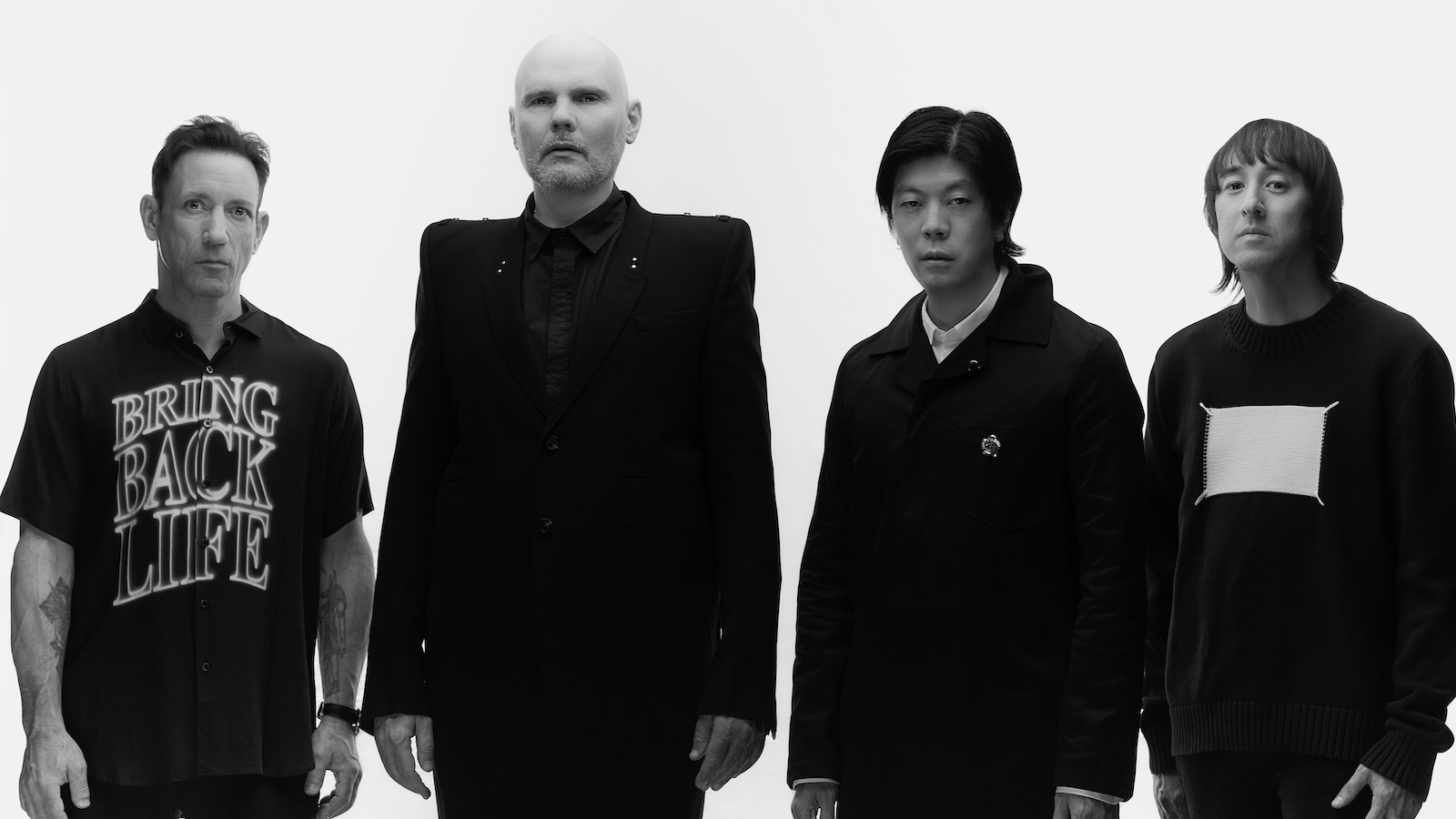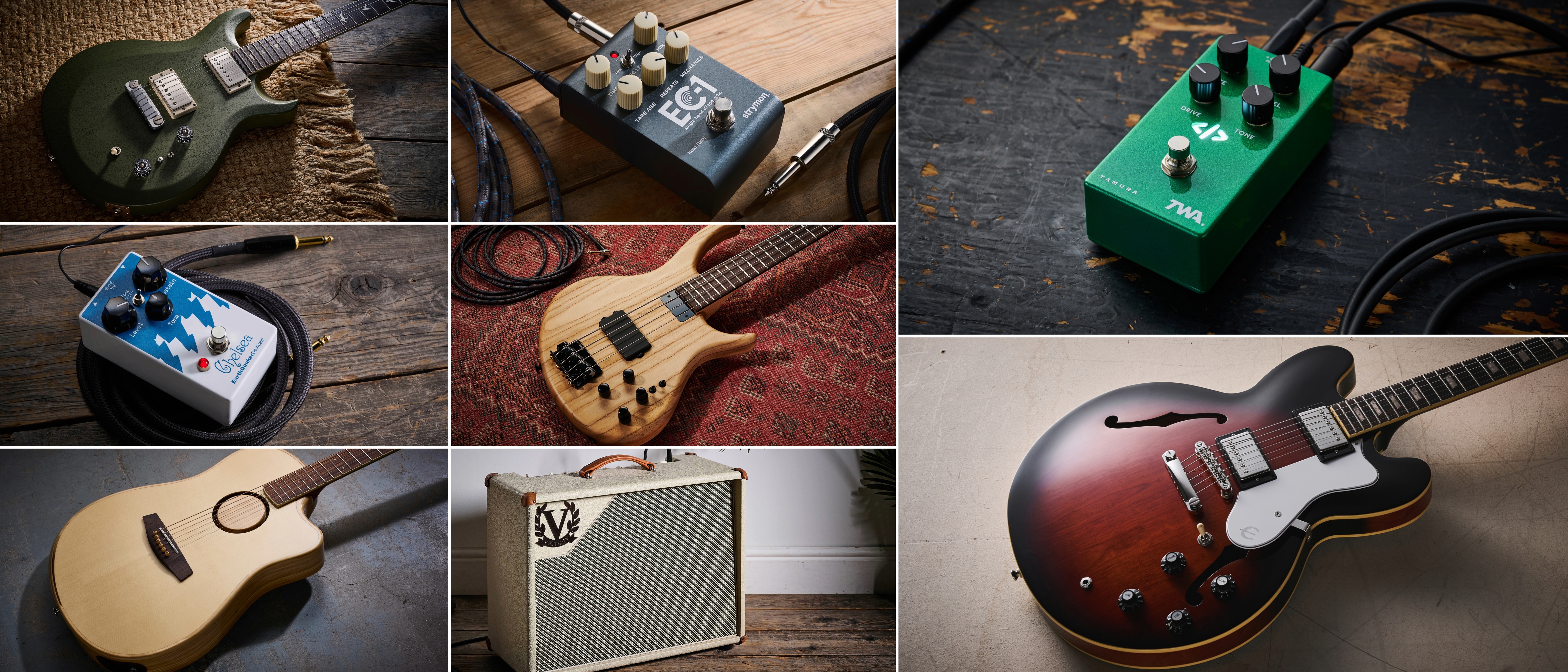The Smashing Pumpkins' Billy Corgan: "I’m a firm believer that the distortion signatures of a guitar need to be organic"
To leap forward into a bold and brave new chapter of their musical narrative, The Smashing Pumpkins go all the way back to square one.

In an age of fractured attention spans and a ghastly over-reliance on nostalgia porn, The Smashing Pumpkins dare to be defiant with their unapologetically erratic and experimental new album: the 72-minute long, synthpop-inspired Cyr. Its 20 tracks are bold and brooding and just the right tinge of buoyant – simplistic at first glance but structured like the perfect French pastry with layer upon layer of deep and dense artistic flair when you dig just a little deeper. Fans of the Pumpkins’ ripping and raging grunge-rock anthems will almost certainly turn their noses up at Cyr – but Billy Corgan doesn’t give a shit.
When we caught up with the 53-year-old father, musical multi-hyphenate and pro wrestling obsessive, one thing became immediately clear: though he’s still emphatically outspoken, Corgan’s appetite to reign at the top of the rock ’n’ roll food chain has all but fizzled out entirely. He notes that he couldn’t be happier with where he’s at on his creative timeline, and even if the critics at large and his army of obsessives hate Cyr with a passion, he’ll still hold the double-disc epic close to his heart.
Because at the end of the day, LP11 is authentic to what Corgan and his bandmates were excited to explore on their own creative wavelengths. It’s not some half-assed attempt to dominate the airwaves or sell out of cheaply slapped-together vinyl boxsets – Corgan’s got enough cash as it is, and he’s ecstatic that he no longer has to worry about the financial validity of his artistic ambitions.
Speaking of which: let’s find out exactly what they are in 2021, shall we?
There’s an almost ‘80s synthpop, club music kind of vibe going on with this record. Where did that inspiration come from?
I wanted to make some modern music, and that was the closest thing to it that I was interested in. Jeff [Schroder, guitars and keys] said it was almost like we went back to the early days of the band, but instead of going right into grunge, we took a hard left into goth and synthpop – and I think that’s a very accurate way to put it. It seems to line up well with some of the more modern types of production, with the way people are making records right now. I don’t think anybody’s really solved the riddle of how to make guitar music in the way that we make guitar music, other than just cranking the guitars up and having a wall of sound – which we were obviously doing 25 years ago. So I was just trying to say something new, I think, and this sound is just where I landed in doing so.
In going back to the Pumpkins’ roots, did you feel there was a more youthful, or collaborative energy between the four of you?
No – but it’s never been that way, y’know? Generally speaking, the way we work is that I’ll go off on some convoluted tangent, I’ll explain it to my bandmates, and they’ll look at me and go, “…Okay. I mean, cool, if that’s what you want to do…” They’ve always been very supportive, but I do think they think I’m a bit crazy. And then we just get into it, y’know? We just kind of navigate where we can take the songs from there. And I think that where we work best is where I’m very clear about what I want, and then they’re very clear about how they can contribute to that. But the songs have to be great.
Even though we’re known for our production, we’re really a ‘song band’ first. People overlook that sometimes, that we have great songs, but that’s all that ever matters. If we have great songs, we can always rise up to the challenge of the production. But if we don’t have great songs, then we’re not interested enough to bother. We don’t want to make cool-sounding records that have shit songs, like a lot of bands do. It’s a fine business model, but it’s not our business model.
All the latest guitar news, interviews, lessons, reviews, deals and more, direct to your inbox!
So would you say this is the strongest the Pumpkins have been as a creative unit?
I think we’re probably the most “on the same page” that we’ve been since Machina. But that’s also when James [Iha, guitars and bass] left, so I don’t know… We’ve always been able to run with the mentality that one plus one plus one equals more than three – which our former bandmate had a critical role in, but wasn’t as involved in the musical decision-making as us three guys were.
I think it’s an interesting dynamic in that James and I really connected on a core set of groups like The Smiths and The Cure, but then Jimmy and I very much connected over our love for classic rock – Deep Purple, Led Zeppelin, Rush… And then of course through time and through cross-pollination, that expanded, but that’s the core foundation of how we were – James brings a little bit more style and some stardust to what we do, and Jimmy is able to translate the language of rock and new-wave into emotion and power. It’s a really weird dynamic, and I can’t think of many other bands like that – but it works! And when it works, it’s quite beautiful; it engenders in me an emotional response that I wouldn’t otherwise have on my own.
What did your guitarsenal look like in the Cyr sessions?
I played my Reverend signature model a lot, and I also had a 1962 Gibson 335. There was one Gibson factory out in Detroit that made the same 335s that Eric Clapton and Ritchie Blackmore played – there’s a certain series of 335s that only came from that one factory, and they’re hotter than the other 335s. It’s one of those, and it’s honestly one of the best guitars I’ve ever bought – it’s ridiculous. It sounds like early Cream. It’s just got that attack to it, y’know?
Are you much of a slut for pedals?
Not so much anymore. I have a crazy vintage collection, so y’know… I love all the boutique pedals that are coming out right now, but most of them are recreations of pedals that I already own the originals of – I don’t know if I really need the clone of the clone of the $1,200 pedal I already have. Although I do have some clone pedals that are really, really good – there’s a Klon Centaur clone that I bought off eBay for like $25 which I used a lot on this album.
So how were you processing those guitar parts in tandem with all the new synthesisers and electronic elements?
I don’t use computers for guitar. I don’t like plugins or any of that stuff – I’m a firm believer that the distortion signatures of a guitar need to be organic. I certainly hear stuff that is attractive about digitally manipulated guitars, like the way you’re able to move a part forward in the mix and stuff like that, but personally I don’t give a f***. I grew up on Black Sabbath and Queen and Jimmy Page, y’know? I want power. I don’t want any bullshit. I just want that pure, raw energy – which is why I’m willing to buy expensive vintage guitars and great amps. We also work with a lot of density – some of the tracks on Cyr have, like, nine synthesisers playing at the same time, on top of an analogue bass and some guitar work. In order for those guitars to cut through the mix, you have to have an analogue signal path.
As a listener, do you like when it takes a few listens for that density to leaven?
I do. People like to tell me that they don’t really understand my records until they smoke some pot, because it allows them to hear all the layers that are in there. If you look closely at a great painting, you’ll see there’s a lot of depth in the work. You can look at it for five seconds and go, “Oh, it’s a lady on a couch,” but if you really look, you’ll see shades and tones and an emotional quality – and that’s the way I perceive music. There should be a romantic quality that you have to peer into it to find.

Ellie Robinson is an Australian writer, editor and dog enthusiast with a keen ear for pop-rock and a keen tongue for actual Pop Rocks. Her bylines include music rag staples like NME, BLUNT, Mixdown and, of course, Australian Guitar (where she also serves as Editor-at-Large), but also less expected fare like TV Soap and Snowboarding Australia. Her go-to guitar is a Fender Player Tele, which, controversially, she only picked up after she'd joined the team at Australian Guitar. Before then, Ellie was a keyboardist – thankfully, the AG crew helped her see the light…
